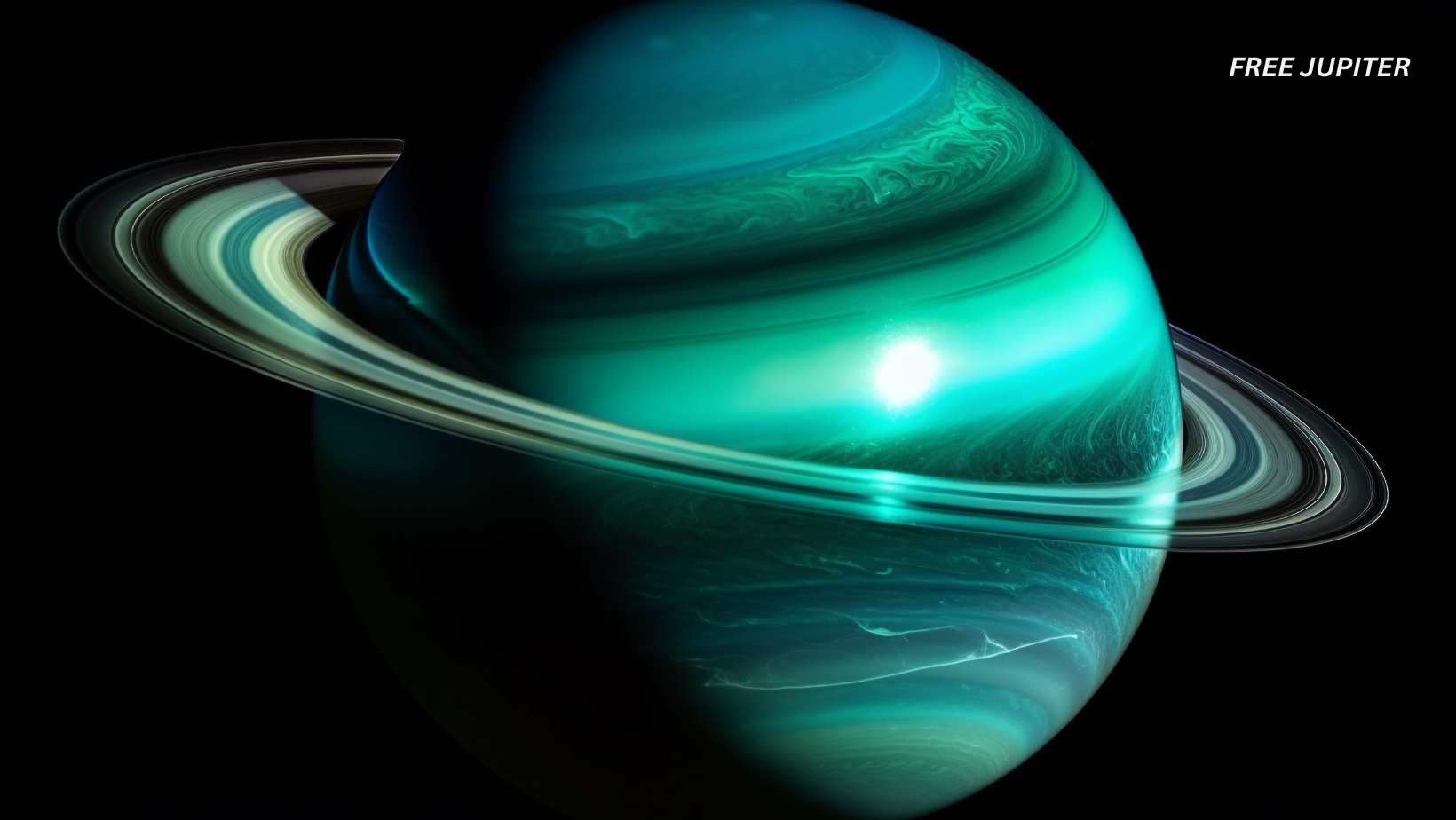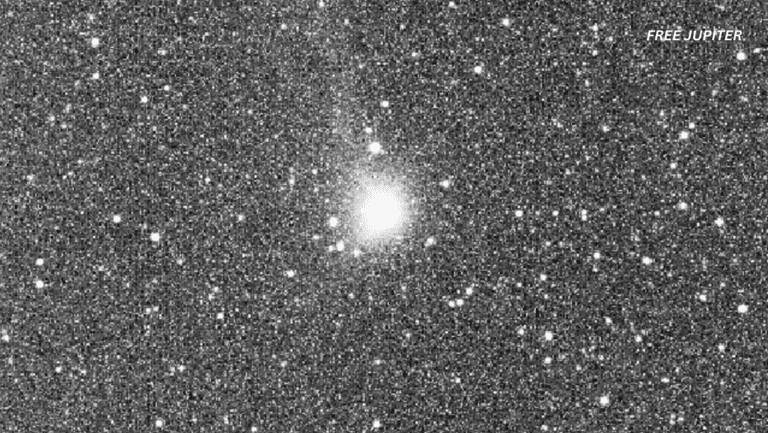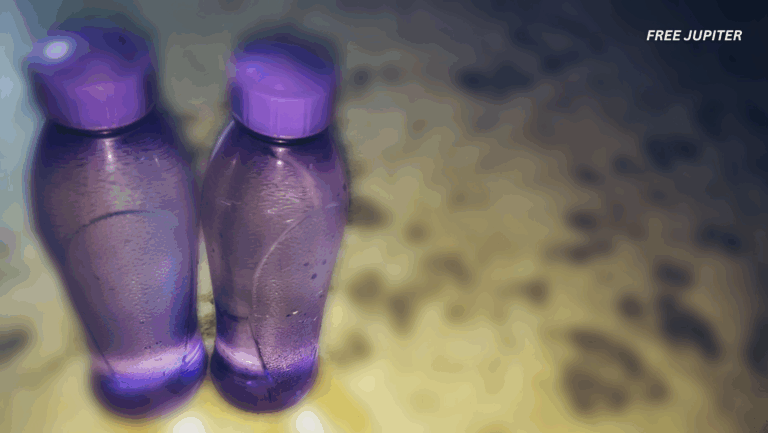Friendly Note: FreeJupiter.com shares general info for curious minds 🌟 Please fact-check all claims—and always check health matters with a professional 💙
Out in the frigid outskirts of our solar system drifts a planet that seems to defy all planetary norms. It doesn’t spin like the others, it isn’t made of solid rock or gas alone, and it has a name that often sparks a giggle or two. But Uranus, for all its oddities, is one of the most fascinating places in our cosmic neighborhood.
With its pale blue-green glow, icy storms, tilted rotation, and strange magnetism, Uranus is a world of extremes. And yes—it’s so large that 63 Earths could fit inside it. Yet it remains one of the least explored planets in the solar system. Let’s take a closer look at this sideways-spinning giant and why scientists are still so intrigued by it.
A Planet Big Enough to Fit 63 Earths
Let’s start with size—because Uranus is enormous.
Its diameter stretches over 31,500 miles (or 50,700 kilometers) across. That’s more than four times wider than Earth. If you could shrink Earth down to the size of a coin, Uranus would be like a hefty softball floating next to it. In terms of volume, Uranus could fit about 63 Earths inside—a fact that really puts our home planet’s size in perspective.
But keep in mind, this isn’t a solid ball of rock. Uranus is an ice giant, made mostly of fluids and gases rather than solid surfaces. So while 63 Earths might fit inside it, there wouldn’t be anywhere solid to stand or build a home.
Spinning Sideways Like a Cosmic Tumbleweed
Most planets spin like a top, slightly tilted as they orbit the Sun. Uranus? It rolls. Its axis is tilted about 98 degrees, meaning it practically lies on its side as it makes its way around the Sun. Picture a rolling barrel or a knocked-over globe making laps through space.
This unique tilt leads to extremely long seasons. Each of Uranus’ poles experiences 21 years of continuous daylight, followed by 21 years of night. These seasons are unlike anything on Earth and likely affect the planet’s weather and cloud patterns in ways we still don’t fully understand.
Scientists believe this bizarre tilt was caused by a massive collision billions of years ago—possibly with a large protoplanet—that knocked Uranus off its original upright position.
Read more: Biologists Say That The Sun May Be A Conscious Being
Discovery: A Planet Mistaken for a Star
Uranus was the first planet discovered with the help of a telescope. British astronomer William Herschel spotted it in 1781, though he originally thought he’d found a comet or a distant star.
Herschel proposed naming the planet “Georgium Sidus” (George’s Star) to honor King George III. But this didn’t go over well internationally. Eventually, astronomers settled on the name Uranus, suggested by German astronomer Johann Elert Bode. In Greek mythology, Uranus was the ancient god of the sky—the father of Saturn and grandfather of Jupiter. This naming choice kept with the tradition of mythological names for planets.
Not a Place for Life as We Know It
If you’re hoping to move to Uranus someday—don’t pack your bags just yet.
The environment of Uranus is extremely harsh and unfriendly to life. Temperatures can plunge to -224°C (-371°F), making it the coldest planet in the solar system, even colder than Neptune. The atmospheric pressure is crushing, the winds are violent, and the chemicals in the atmosphere—mostly hydrogen, helium, methane, and traces of ammonia—aren’t exactly life-sustaining.
While we can’t completely rule out some exotic forms of life in the deep atmospheres of other planets, Uranus is considered uninhabitable for any Earth-like organisms.
Spins Backwards, Just Like Venus
Not only does Uranus spin sideways, but it also rotates in the opposite direction of most planets. Earth, Mars, Jupiter, and Saturn all spin counterclockwise (when viewed from above the North Pole), but Uranus and Venus are retrograde rotators—they spin the other way. This backwards motion is still a mystery and may also be tied to past collisions.
Yes, Uranus Has Rings Too
While Saturn’s rings steal most of the spotlight, Uranus also has a ring system—though it’s fainter and darker.
Uranus has 13 known rings, divided into two groups. The inner nine are narrow, dark, and difficult to see. The outer two are wider, and one is even reddish, while the farthest is a brilliant blue, much like Saturn’s E ring.
The rings have names such as Zeta, Alpha, Beta, Gamma, Delta, Epsilon, and Mu, along with a few simply numbered rings. These rings contain dusty particles and icy debris, and are likely held in place by the gravitational tug of nearby moons.
Read more: New Study Finds the Human Brain Processes Reality in Up to 11 Dimensions
How Uranus Was Formed
Like the rest of the planets, Uranus formed about 4.5 billion years ago, when the solar system was still just a swirling cloud of gas and dust. As gravity pulled this material together, Uranus grew into one of the ice giants, along with Neptune.
It’s believed that Uranus may have formed closer to the Sun and later migrated outward to its current position. This idea is part of a broader theory about how the giant planets rearranged themselves in the early days of the solar system.
What’s Inside Uranus?
Uranus doesn’t have a solid surface like Earth or Mars. Instead, it’s made mostly of icy, slushy fluids—especially water, methane, and ammonia—surrounding a rocky core. Scientists think about 80% or more of the planet’s mass is this thick icy mixture.
Deep below the cloud tops, temperatures rise dramatically. Near the core, it can reach 9,000°F (nearly 5,000°C). That’s hotter than the surface of the Sun!
Even though Uranus is slightly larger than Neptune in diameter, it has less mass, making it less dense. In fact, it’s the second least dense planet, right after Saturn.
Why Is Uranus Blue-Green?
Uranus has a soft, dreamy blue-green color. This is thanks to methane gas in its upper atmosphere. When sunlight hits Uranus, the methane absorbs red light and reflects blue and green light back into space. That’s what gives it its signature hue.
The atmosphere is made mainly of hydrogen and helium, with traces of methane, water, and ammonia. For a long time, Uranus looked like a calm, featureless sphere. But newer telescopes have revealed faint cloud patterns, storms, and even giant dark spots, especially around the planet’s equinox periods.
Final Thoughts: A Cold, Curious, and Cosmic Enigma
Uranus may not be as flashy as Saturn or as stormy as Jupiter, but it’s easily one of the most unique planets in our solar system.
From its sideways rotation and icy composition to its unusual seasons, rings, and retrograde spin, Uranus breaks almost every rule in the planetary playbook.
It’s cold. It’s weird. It’s beautiful. And it’s still full of mysteries waiting to be explored.
One thing’s for sure—Uranus is proof that even in a vast universe, there’s always room for a little cosmic oddity.










